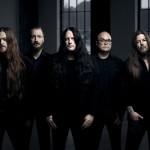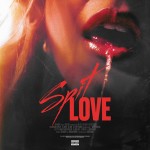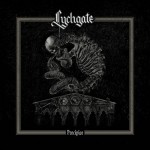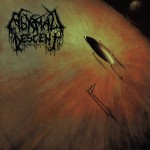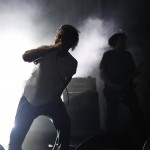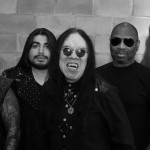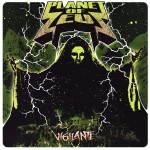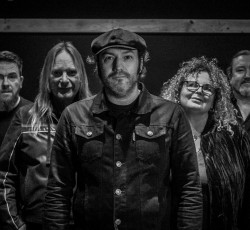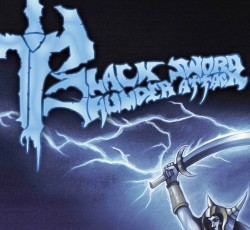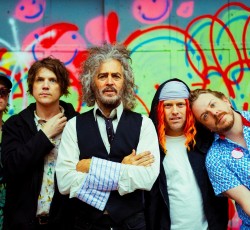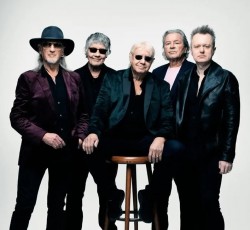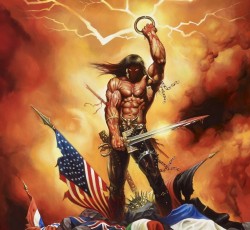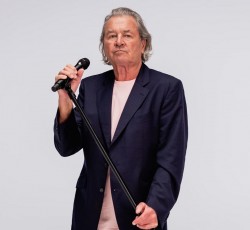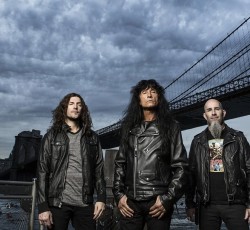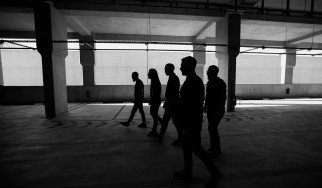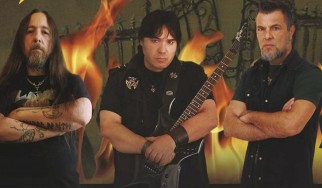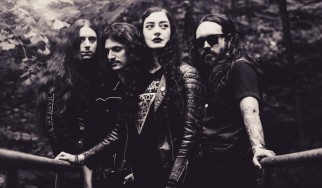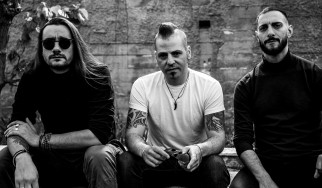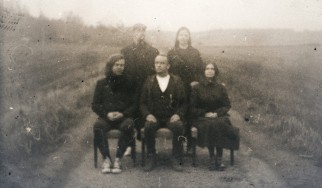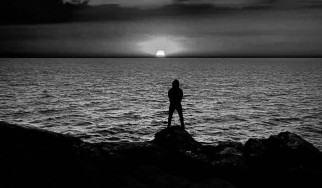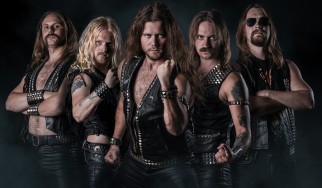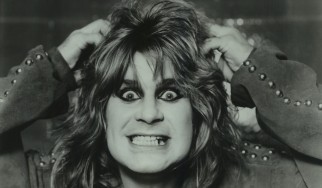Spiine: "Our imagination is one of the only places where we can be free and without judgement"
A conversation with two legends of Australian metal - Sesca and Xen - about the breathtaking debut of their new project Spiine
Ne Obliviscaris and Virgin Black are surely two very familiar names to a lot of metal fans, with Xen (now ex-singer of the former) and Sesca Scaarba (guitarist of the latter) having already carved a remarkable musical legacy. This legacy is now being expanded with the astonishing "Tetraptych" - the debut album of their new project Spiine - an album that sounds like a true landmark of the contemporary doom/death genre.
Rocking.gr sought Spiine and had the pleasure of a chat with both these wonderful artists. Of course, the deep and poetic nature of their music provided with a lot to talk about and the result is an interview that goes beyond the "ordinary", with the two artists digging deep into their souls and to the core of philosophical and artistic matters. This is a conversation as true and as transcendental as their music.
So, follow them in a pilgrimage through human suffering and in the wonders it signifies.

Congratulations on your amazing debut album, I am truly delighted to welcome you at rocking.gr! After so many years of work, what are your feelings now that your music is finally about to be shared with the audience?
SESCA: Thank you Antonis. This album has been something deeply personal to us, something we have nurtured and lived through in a very real way. Now, sharing it feels less like a grand unveiling and more like an offering - to those who may resonate with it, who might find solace in it. It is a deeply personal expression, and in that, there is a quiet kind of fulfillment.
Spiine is a project that you have been working on for some time now. Could you tell us the story so far? When did you have the original idea for this band and what were the most significant milestones in this creative process until today?
XEN: It’s very simple really; I’d always wanted to create a doom inspired project, I feel it was always inevitable but it was just about when I was mentally ready. You spend years gathering burdens, you hopefully grow more introspective, and are just able to harness more from life’s experiences and observations - it was time to unburden some of that life. Sesca and I have been friends for many years so she was the first person I felt comfortable approaching as more a contact for sourcing potential guitarists - I didn’t think she would be interested ultimately… however she was and that’s where the search stopped, without even searching - this was late 2019. That in itself is the most significant milestone to me, simply grateful to be able to work with someone as talented and grounded as Sesca. We have only just begun though, on the precipice of finally releasing our debut album, a milestone built from the many small stones we’ve been dragging up this hill.
While you could have found amazing local musicians, you decided to collaborate with Waltteri and Lena. How did these collaborations happen?
XEN: I’d been following Waltteri’s work with bands like Paradise Lost and Bodom After Midnight, and due to his flexibility in style we approached him to gauge his interest - he had the gusto and enthusiasm of youth yet the drumming maturity of a veteran therefore knew he had the mental capacity to endure what we were after - he did however state that this was probably the slowest music he had recorded to. Regarding bass, Sesca and Lena already knew each other, that was simply a meant to be situation, and being a My Dying Bride fan already how could I deny the touch of doom royalty?
We’re creating art without much compromise, we like to think that there is integrity in everything we produce
Everything around Spiine is of excellent quality - the production, the logo, the video, photo shootings, guest artists etc. At the same time, you remain a 100% independent project. How did you achieve it? Can this be sustainable?
XEN: It’s the experience and learning we’ve garnered from the years within the industry. Sesca and I take pride in what we create, first impressions last and anything online is in a way immortalised, there to haunt you forever so we’re doing things right the first time. We’re creating art without much compromise, we like to think that there is integrity in everything we produce, a whole complete existence. I will say though compromise depends on time and one’s priorities, as I would rather invest money into creating art than buying designer clothes, it’s pretty simple. It also helps when we’re fairly self-sufficient though as creative minds, and I take care of the visual aspects for the band, like with my other projects, certainly saves money rather than hiring another artist for every single thing.
"Tetraptych" is a "difficult" album, with only 4 songs and over 60 minutes of incredibly slow and crushing heavy music. Was there a reason behind this compositional/artistic approach?
SESCA: This wasn’t really about imposing a structure or forcing an idea—it was about allowing the music to surface as it needed to. In many ways, for me, it felt like I was writing for myself, so that myself could hear it—so that something unspoken could finally be given shape. The weight, the slowness, the scale of it all—these weren’t decisions in the usual sense, but the only way it could be, the only form it could take.
Our imagination is one of the only places where we can be free and without judgement
I found the lyrics to be fantastic - very deep, poetic and quite cryptic at the same time. How would you describe the lyrical aspect of your work?
XEN: To me lyrics are just as important as the music and so I appreciate when someone takes the time to sift through them. I always lean into the abstract and the visual; creating scenes, moving paintings, and even worlds within each song. They have layers of meanings and various references, I’m not one for spoon feeding people though so whatever meanings people glean from them are how they should be received, after all our imagination is one of the only places where we can be free and without judgement.
I sent Xen some crusty, barely held together kvlt demos (the kind that sound like they were recorded in a forgotten crypt on a half-broken tape deck), he didn’t even blink. That kind of unshakable trust? Invaluable
Sesca, in what ways is it the same or different to compose for Spiine, compared with Virgin Black?SESCA: In both bands, I’ve been fortunate to work with someone who shares a similar frequency - where ideas don’t need to be over-explained. That kind of creative alignment is rare, and it allows for a sense of trust and freedom in the writing process. In both cases, I’ve had the space to explore and shape ideas without constraint, which is something I don't take for granted. One difference, though - I sent Xen some crusty, barely held together kvlt demos (the kind that sound like they were recorded in a forgotten crypt on a half-broken tape deck), he didn’t even blink. That kind of unshakable trust? Invaluable.

Xen, your vocals were always impressive but I think they never sounded as intense and majestic as in “Tetraptych”. Would you agree? And if yes, what is the reason?
XEN: I appreciate that. I approached the vocals in a very different way to NeO, wanting to explore some more ugly and feral sounds, and a somewhat unrestrained overall feel but at the same time creating a strong doom foundation as the core of the album. I went in with a more experimental mindset, nothing really off limits for vocals. There’s less editing, more mistakes, less polish in general - it feels more genuine, and suits this style of music and the themes within our lyrical subject matter.
The phrase a pilgrimage through human suffering, the title "Myroblysiia", the cross in the cover… what is the importance and the significance of religion within the Spiine universe?
SESCA: What you have listed are symbols - representations that point beyond themselves and carry multiple layers of meaning, both personal and archetypal. While they may be traditionally associated with religion, their significance within Spiine is not about doctrine but about the depth of what they evoke in the human psyche. The cross, the concept of pilgrimage, and the title Myroblysiia all touch on fundamental themes of suffering, transformation, and transcendence - realities that extend beyond any single tradition and speak to the human condition itself.
If there is hope, it lies in the willingness to descend, to step deliberately into the untouched corners of the soul
Can extreme suffering lead to bliss? In a relevant question, can one find hope behind such devastating music?
SESCA: 'Bliss' is possibly not the right word. The music doesn’t seek to romanticize suffering, nor does it offer easy resolution. Rather, it carves out a space for it - to be felt, to be witnessed. If there is hope, it lies in the willingness to descend, to step deliberately into the untouched corners of the soul. Like a pilgrimage, it's not about escape, but about moving through darkness with intention, in search of something beyond mere survival.
The word Spine, the body on the cover, the video clip, also indicates that the human body is of great importance too. To you, is the human body a temple or a prison?
SESCA: We see the human body as both - a vessel and a weight. It holds us, it decays, yet it is also the medium through which we endure, break, and, for some, transform. Lene Marie Fossen’s self-portrait on the cover becomes a symbolic anchor for this - both fragile and powerful, confronting suffering with unflinching honesty. Just as TETRAPTYCH descends into the depths of human suffering, her image reflects that same confrontation: the stripping away of everything until only raw, unfiltered truth remains. All these elements embody the paradox of existence - the body as both a prison and a passage, the thing that weighs us down and the thing that carries us forward. It is in that tension that meaning is forged.

In the amazing "Myroblisiia" video, you collaborated with the world-renowned Japanese butoh performer, Atsushi Takenouchi. Were you familiar with this art before? It really adds a different dimension to your music.
XEN: I’ve always been fascinated in different styles of movement performance or dancing, so I’d been aware of butoh for many years, I’d just been waiting for the right moment to explore and incorporate it into something I was doing creatively. As with most styles of art, within the field there are different or more contemporary approaches however Atsushi concentrates on a more primal and traditional style, it matches what we do in Spiine - it’s deep, tortured and powerful.
Xen, it must have been a difficult decision to quit Ne Obliviscaris, how do you feel about this decision today? Also, are you currently working on scheduled Omega Infinity and Antiqva releases?
XEN: I’d made the decision to leave NeO so that I could concentrate on building my creative world, my greater need over constant touring. It wasn’t easy given that the band has been a part of my life for 22 years but it was a necessary step to progress in my personal journey. I don’t think I’ll ever be able to process it properly, the loss will always be there but since it was my decision I will have to be at peace with it - the art of letting go one would say. Both my side projects are alive and well; Antiqva is in the process of organising some recordings, and Omega infinity has a number of albums ready for me to record vocals to when I have some spare time amidst everything.
Sesca, is there a hope for a new Virgin Black release in the future? Would you consider Virgin Black an active band?
SESCA: That door hasn’t been completely shut. We started writing the next album some time ago, but whether it re-emerges or remains as it is will depend on forces that haven’t fully revealed themselves yet.
Is Spiine a strictly studio project or are you open to perform live in the future? Also, we hope there are plans for a second album, is this correct?
XEN: The plan when we started was purely a studio project, no pressure to perform or organise shows, it was merely to just create… in saying that though we’ve been approached to play festivals, support shows etc, but we’re two people and so the effort to get a live show happening would require time and the right live musicians. Our focus and priorities are in the studio, perhaps if the right opportunity arose then our outlook may be swayed. In terms of a second release, we have things brewing already.
I want to thank you from the bottom of my heart for your time and your exquisite art and I wish to you all the best in this journey. Yours are the final words.
SESCA: Not all things are meant for all people. Some will find themselves in this music; others may pass it by. But if it does resonate with you, then it has reached where it was meant to go. As an independent release, it relies entirely on those who support it. That support is what allows this kind of music to exist at all. Thank you, Antonis.


